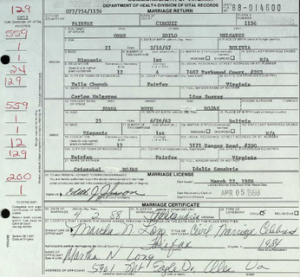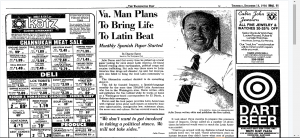The Immigration and Nationality Act of 1965, also known as the Hart-Cellar Act, impacted the immigration experience for Bolivians in many ways, most significantly prioritizing professionals and families. By the 1980s, large numbers of Bolivian immigrants were coming to the U.S., primarily settling in the Washington metropolitan area.
Figure 1
Source: http://www.countryreports.org/
President John F. Kennedy always felt inclined to introduce immigration reform in the United States because his mother was an Irish immigrant who had a difficult time adjusting to American life.[1] Kennedy never addressed global issues during his first two years in office, but in 1963 he finally formulated his own immigration reform plan that eliminated visas based on national origin quotas.[2] However, Kennedy was killed before he was able to carry out this plan. Fortunately, Lyndon Johnson intended to carry out Kennedy’s plan and introduced his version of Kennedy’s plan.[3] Countries in the Western Hemisphere, however, were exempted from any quota restrictions, but were negatively affected by the LPC and literacy components of American immigration law.[4]
Figure 2: President Johnson signs the Immigration Act of 1965 at the foot of the Statue of Liberty on October 3, 1965.
Source: http://www.migrationpolicy.org/
Bolivian immigrants, who were seeking economic opportunities in the United States, were highly educated, often with college and graduate degrees. The marriage certificate presented in figure 2, between Omar Zoilo Melgares and Juana Ruth Rojas, notes that Melgares had completed collection while Rojas graduated from high school.[5] Julio Duran, who lived in Alexandria in the 1980s, established a Spanish language newspaper to benefit the Latino community. He was a professional journalist who worked in the Washington office for a Bolivian newspaper. A journalist for The Washington Post noted, “Duran said his local paper provides Latin Americans with regional news about such issues as minority business opportunities, immigration law, substance abuse, the arms race and culture.”[6]
Figure 3
Source: Virginia Marriage Certificates, “Omar Zoilo Melgares and Juana Ruth Rojas,” accessed November 7, 2016, http://www.ancestry.com/.
Figure 4
Source: Dianne Saenz, “Va. Man Plans to Bring Life to Latin Beat: Monthly Spanish Paper Started,” The Washington Post, December 18, 1986.
Bolivian immigrants were different than most other groups coming to the United States in the 1970s to the present, because they were not filing for asylum. They were often well educated, and had skills, which many recognized would benefit the American economy. Once in the United States, Bolivian immigrants created transnational connections and sent important information and money back to Bolivia; many families participated in chain migration, and followed other relatives to the U.S.
[1] Tom Gjelten, A Nation of Nations: A Great American Immigration Story (New York: Simon & Schuster, 2015), 97.
[2] Gjelten, 106.
[3] Gjelten, 114.
[4] Gjelten, 115.
[5] Virginia Marriage Certificates, “Omar Zoilo Melgares and Juana Ruth Rojas,” accessed November 7, 2016, http://www.ancestry.com/.
[6] Dianne Saenz, “Va. Man Plans to Bring Life to Latin Beat: Monthly Spanish Paper Started,” The Washington Post, December 18, 1986.




